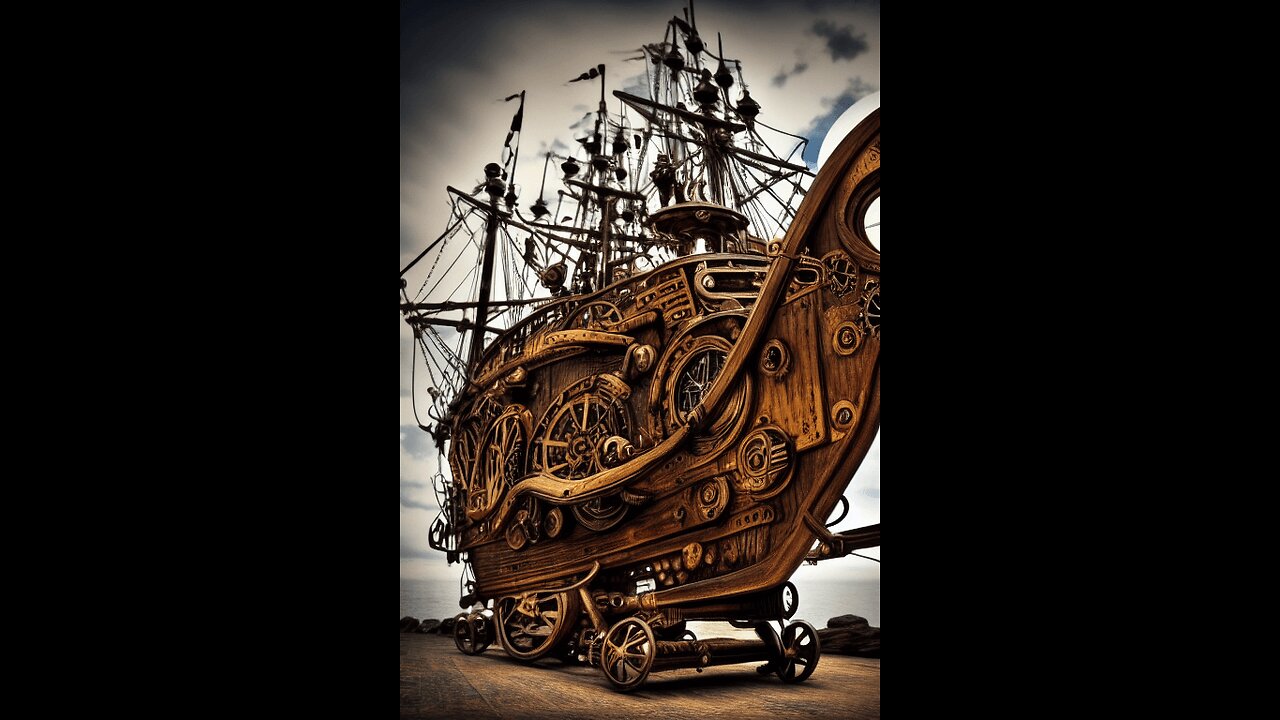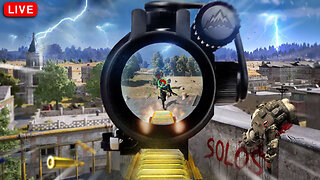Premium Only Content

"A Story of Land and Sea" by Lord Dunsany
Lat. 23 N. Long. 4 E: That's in southern Algeria, in the Sahara Desert.
Cape St. Vincent: the southwesternmost point of Portugal and of mainland Europe.
Margate: in this case, surely the coastal resort in county Kent, UK
Gale: a strong wind, which even as early as 1810 was measured on the "Beaufort scale" of "moderate" (28-33 knots), "fresh" (34-40 knots), "strong" (41-47 knots), and "whole" (48-55 knots).
in a hundred yards they could only turn their ship four yards from her course: for you metric types, just sub in meter for yard and that's close enough for our purpose here (1 yard is a touch more than 0.9 meters)
knots are not a unit you land-lubbers know what to make of, so, for the numbers we're given throughout the text:
1 knot = 1.151 mph, or 1.852 kph
2 knots = 2.30 mph, or 3.7 kph
3 knots = 3.45 mph or 5.55 kph
10 knots = 11.51 mph, or 18.52 kph
18 knots = 20.71 mph, or 33.34 kph
Ship's bells: bells are struck every 30 minutes of a 4 hour watch. Thus two bells could be 1 am, 5 am, 9 am, 1 pm, 5 pm, or 9 pm. So in the case where they are eating breakfast, it must be either 5 am or 9 am, probably 5, although in the circumstances they were in, they may well have slacked off and gotten into the habit of starting their day later rather than earlier. But I'd still probably go with 5 am.
Horse gaits: Walking is the slowest speed for a horse, roughly 4 mph (7 kph). A trot is a fair bit faster at 8 mph (13 kph). Then the canter ~15 mph (21 kph), and the gallop at 25+ mph (40+ kph).
A normal walking pace for a camel is 3 mph (5 kph), that's only 2.6 knots. But it appears that a camel can be expected to manage in the ballpark of 100 miles per day (86 or 87 "knots" - why the author uses that word as a measure of distance I cannot understand, as it is clearly a measure of speed...). Shard attributes 84 knots to a camel, which it turns out is entirely reasonable. But also, slightly less than what they are capable of, which is no doubt why he ran into the trouble he did.
The strange long muskets were most likely moukahla, a type made and widely used in North Africa from the 17th through 19th centuries. They were very long (6 feet, or 2 meters), and very large caliber (0.67, or 17 mm).
epaulment: a barricade of earth like a rough parapet used mainly as cover from flanking fire. From the French word épaulement: a shoulder movement performed by turning the body from the waist upward and bringing one shoulder forward and the other back
If we go south east from 23°N 4°E to the Niger River, we end up at the village of Bourem, Mali on the river, which is roughly 500 miles in a straight line. At 84 knots per day, that's ~96 miles, which they sustain for 7 days, for 692 miles. So they must not have gone a straight line, but ended up probably somewhere further westward, closer to Timbuktu, which no doubt would have been your main navigation point in that time period.
10 fathoms: 60 feet (18 meters). Normally fathoms is used to indicate depth of water, this is literally the first time in my life I have heard it used to measure a distance on land. Bizarre. But then given the misuse of knot as a unit of distance, I rather fancy Dunsany doesn't actually know anything about sailing and boats and such, and is just throwing around some random words he heard one time.
To follow along: https://www.gutenberg.org/files/13821/13821-h/13821-h.htm#story
-
 LIVE
LIVE
Bitcoin News Alerts
2 hours ago"75% Chance Big Beautiful Bill Eliminates Capital Gains Tax On Bitcoin"
419 watching -
 2:04:40
2:04:40
The Quartering
4 hours agoIdaho Shooter NAMED, Social media Scrubbed W/ Owen Shroyer!
221K17 -

Nerdrotic
19 hours ago $5.65 earnedTemu WWIII Canceled Pride Month, but Not Ironheart - Nerdrotic Nooner 497
54.4K7 -
 1:04:26
1:04:26
Jeff Ahern
1 hour agoMonday Madness with Jeff Ahern
17.6K6 -
 LIVE
LIVE
RalliedLIVE
3 hours ago $2.53 earnedSHOTTY BOYS WARZONE CHALLENGES
272 watching -
 LIVE
LIVE
StoneMountain64
3 hours agoPUBG maximum LOGIC + STRATEGY for the WIN
87 watching -
 57:20
57:20
HotZone
8 hours ago $0.36 earnedWar Continues as Israel Strikes HARD in Lebanon and Iran
15.5K10 -
 3:07:37
3:07:37
Viss
4 hours ago🔴LIVE - Dominating The Battleground with Tactics! - PUBG
19K1 -
 1:38:15
1:38:15
Russell Brand
4 hours agoGlastonbury Goes RADICAL - Police Probe 'Death to the IDF' Chant - SF605
192K20 -
 1:32:42
1:32:42
Tucker Carlson
4 hours agoRFK Jr. Provides an Update on His Mission to End Skyrocketing Autism and Declassifying Kennedy Files
72.1K70